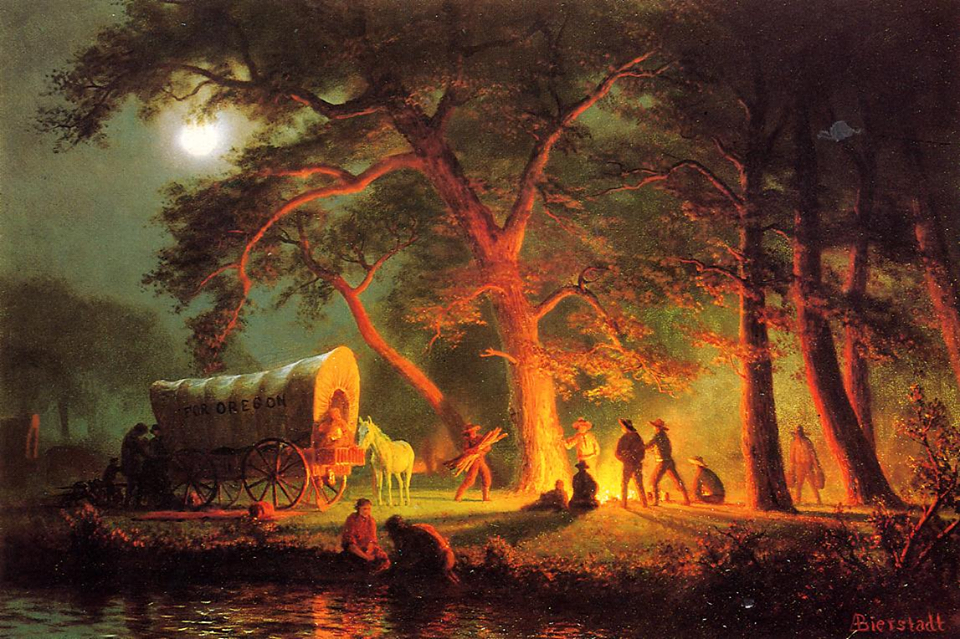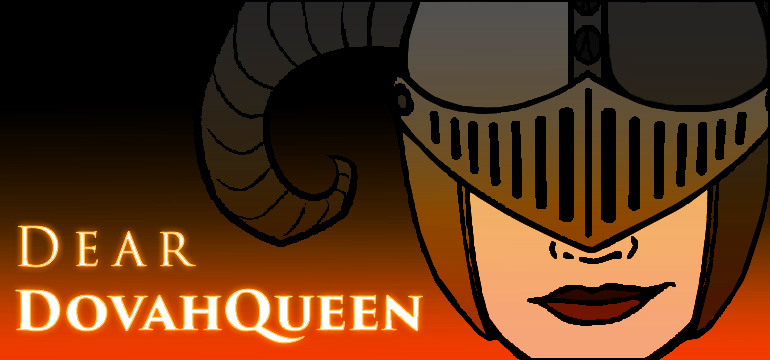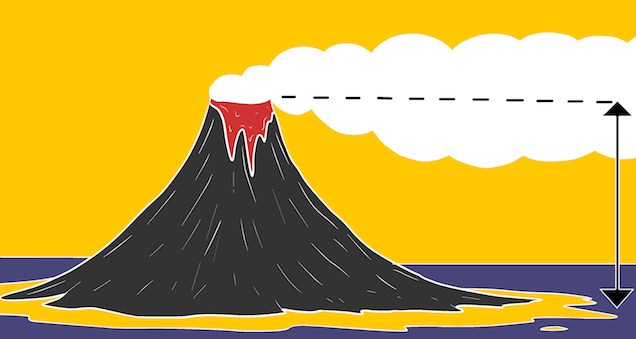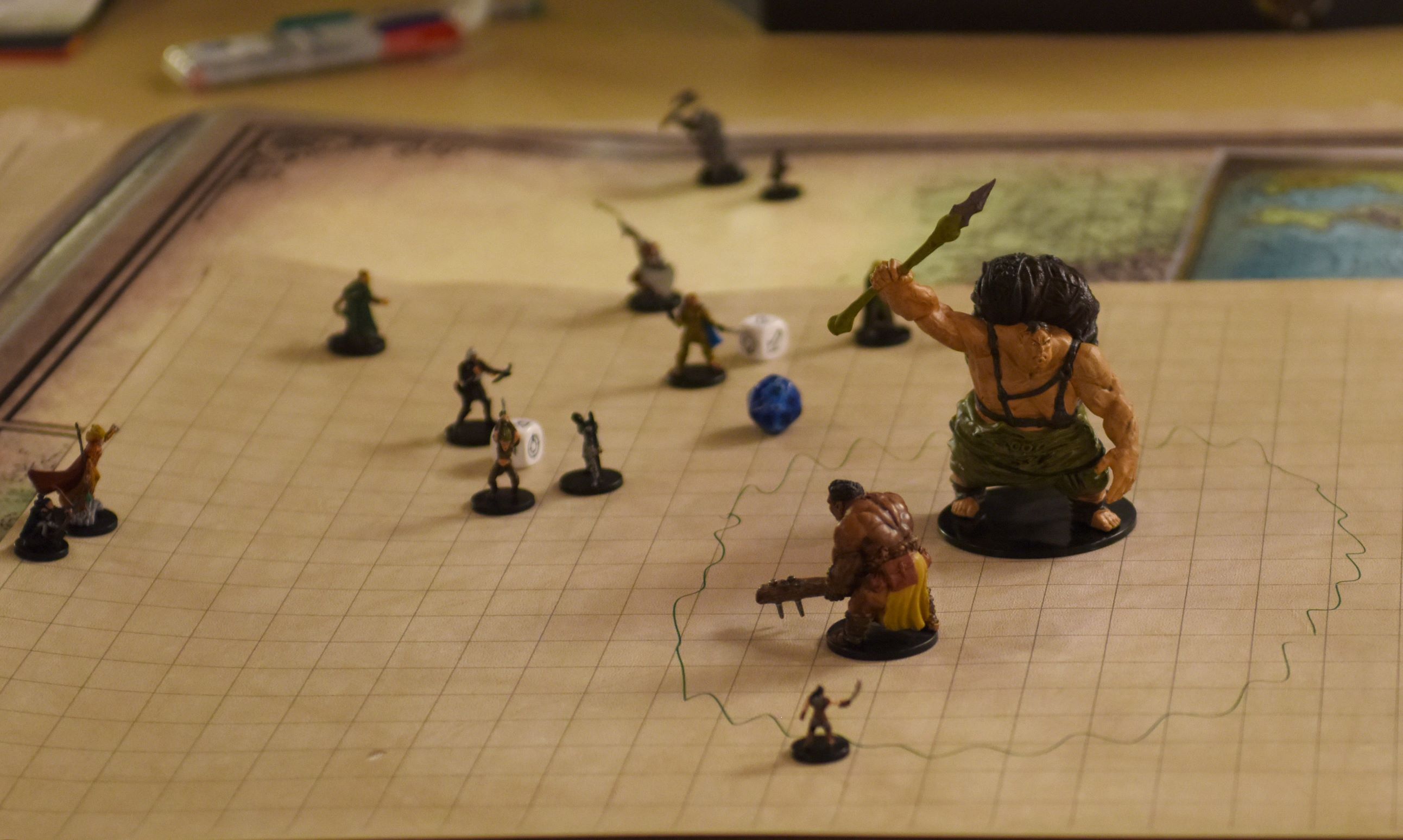“You’ve been on the road for 3 hours…I think. You’ve probably gone 5 miles? Umm…let’s just say you’re there, ok?”
The specifics of time spent traveling, and the amount of distance traveled, is frequently more guess work than precise. Today we look at how to incorporate the existing exploration mechanics of the Playtest into our travels in a more accurate way.
Dear DovahQueen: Something I sometimes struggle with is keeping track of time in what Pathfinder 2.0 now calls exploration mode. Its the whole distance in time thing when the terrain can change and water and food can get low and I want to make it interesting etc. Any tips here? Its not a basic math issue. I have a PhD in a natural science and work for a big ol Pharma company in Switzerland. Its more of a “I lack a system here and therefore hate it.”—A Concerned GM
Dear Gamemaster: I think you bring up a really strong point: travel time in tabletop games is often so nebulous that it can be a bit problematic. “So how long ‘have’ we been traveling?” “Umm…well you left in the morning. It’s ‘probably’ mid-afternoon.” This exact conversation, verbatim, has probably been had at least ten times in every veteran group. Even when past systems have had established rules for travel times, they were often so cumbersome, or felt so casually tacked-on, that they were rarely used. When the very first sentence of the Exploration section in the Playtest is “[time for] exploration is more free-form,” you wouldn’t be wrong if you felt left wanting for direction. Maybe the final product will go into more detail, but for the time being, I think I’ve got some good ways to handle a bit more precision behind the wheel.
What they do provide is a chart that includes what they consider to be a comfortable travel distance against the base land speed of the party. I’d wager that most parties are going to fall in the 15 to 20 feet range because it’s likely that somebody is going to be wearing armor heavier than hide. That places our average party in the 12 to 16 miles per day time frame, or 32 if on unencumbered horseback. Under the chart, it tells us those values are for clear, flat terrain, and that difficult terrain should half those listed values. For most situations, this is likely as far as we’ll need/want to go, but if we need to get more precise, we can. The chart already calculates miles per hour for us, but it assumes 8 hours of feet moving per day. Using this in-system precedent, we can set our hours per mile at “8 hours divided by miles-per-day.” So our average party is going to be spending between .67 and .5 hours for every 1 mile (.25 hours per 1 mile on horseback). I’d allow my players to spend more than 8 hours per day pounding ground, but I’d also warn them that I’m gonna call it fatiguing.
Most maps of Golarion have a scale in miles, so we shouldn’t have too much trouble estimating the length of a route. I’d start calculations using the slowest party member’s speed using the half speed option unless it’s on a well-traveled road or a perfectly peaceful plain; I’d wager most transit time isn’t spent in well-traveled areas. Craggy mountains, dense forests, underground caves, sandy deserts, and frozen tundras all seem like reasonable places to assume the party isn’t walking at a carefree pace. For particularly awfully terrain, like bogs; dense jungles; or the literal plane of hell, I’d consider limiting their miles per day to maybe a quarter of its base value. Paizo lists different terrains on page 340, but these seem mostly written for Encounter mode. None-the-less, I think they could still be useful for trying to gauge how to handle Exploration mode.
Sidenote: what’s interesting about these values is how reasonable they really are. I live in a part of the United States that really likes to talk about Lewis and Clark. For folks who don’t know, these two explorers lead an expedition from Missouri to the Pacific Ocean back when the land was wholly uncharted by white people. That trek took them around 17 months to transverse through 3,700 miles (almost 6,000 kilometers) of unexplored American wildland. Only one person died on the expedition, and it was of disease, so I think it’s reasonable to believe that they weren’t using “Hustling (Fatiguing)” while in Encounter Mode. On average, that means they were traveling roughly 7 miles per day which is very close to what we’d see if we were using this Playtest chart. A group who’s slowest speed is between 15 and 20 should be using 6 to 8 miles per day when going through uncharted forests at a “comfortable” pace.
Now all that’s well and good, but we really don’t have rules for when things go wrong and how that affects the time. Let’s look at some of the common things that could impede our intrepid adventurers. After a bit of cursory research, I found that on average people from hunter/gatherer societies tended to spend about 3 hours per day getting their calories from the environment. Keep track of how many days worth of rations your player brought that way we can force them to roleplay living off the land. In a regular ole wildness with a regular amount of flora and fauna, let’s use that; let’s charge our players with 3 hours per roll of the Survival skill to look for food. When sustenance is more scarce, increase the DC by X amount. My first thought was to increase the amount of time it takes, but honestly, the rules for a task going from one difficulty to another are on page 337 and having to spend another three hours looking for food because you failed the check is already increasing the amount of time it takes. If simply making rolls to progress and not die of starvation seems rather dull, you hide encounters behind success Survival checks. Maybe hitting the DC doesn’t mean they find a fully cooked meal on the ground, but rather they find a momma Dire Wolf and some pack mates who aren’t necessarily happy about becoming a caloric intake. Now you’ve turned the annoyance of having to make Survival checks into a more exciting unknown.
Another common modifier is the weather, and I think you could treat most meteorological events as just another ‘multiplier.’ I’d have any typical storm just increase the difficulty of the terrain that is being passed. If a well-traveled road is 16 miles per day for a party, let the same road in a rainstorm take 8 miles per day. The same rainstorm in a forest then could reduce to 4 miles per day. What I like about weather effects is everything else they can do too. Between pages 340 and 341, they already have some rules for how things like rain, fog, snow, temperature, and wind affect “certain checks,” but they left what those checks are for open to interpretation. A typical one is probably Survival; it’s hard to imagine inclement weather not making survival more difficult. Likewise, I doubt an amount of extra wind isn’t going to penalize ranged attack rolls somewhat.
I hope that helps. I think that most of the work here is figuring out how many miles of terrain is being passed through and then figuring out at what scale you want to be calculating miles and hours passed. Granted, I haven’t exactly laid out a super simple system for you; that’s probably why Paizo left it more free-form, but if you’re like me, and you want to be more precise about it, I’d wager this outta do pretty good for you.
You can request RPG advice or send your questions by email to deardovahqueen@gmail.com or on Facebook.







